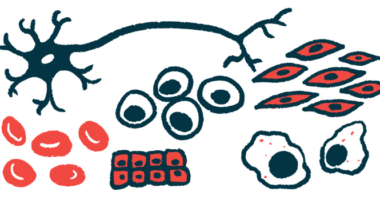Significant differences between sexes seen in ALS gene study results
Findings may help in designing therapies to target motor neurons

The gene expression profiles of motor neurons — the specialized nerve cells that control movement and are lost in amyotrophic lateral sclerosis (ALS) — vary among men and women, with substantial differences found between the sexes in a new study done using induced pluripotent stem cells, or iPSCs.
“The data using iPSC-derived motor neurons show a significant separation between males and females” that reflects “widespread inherent gene expression differences between male and female neuronal cells and tissues,” according to the researchers.
“The striking sex differences in our data suggest that males and females may need to be analyzed separately, requiring twice as many subjects for equivalently powered studies,” the team wrote.
After taking these sex-based genetic differences into account, the scientists were able to identify a suite of more than 350 genes that are abnormally active in male ALS patients. These findings may help to better understand the differences between the sexes in ALS — and ultimately, to design more targeted therapies for men and women.
“It is known that women are less likely to get ALS than men, and if they do get diagnosed with it, it’s generally a little later in life and affects different sets of motor neurons,” Clive Svendsen, PhD, the study’s senior author, said in a press release, adding, “Now that we have discovered gene expression patterns that can distinguish male and female motor neurons, it may help with designing therapies in the future.”
Study finds genetic differences between the sexes in ALS
The researchers’ findings were detailed in a study, “Large-scale differentiation of iPSC-derived motor neurons from ALS and control subjects,” published in the journal Neuron. The work was led by scientists at the Cedars-Sinai Board of Governors Regenerative Medicine Institute, in Los Angeles, California, of which Svendsen is executive director.
ALS is caused by the death and dysfunction of motor neurons, and studying them in humans is essential for understanding the disease. However, it’s not feasible to collect motor neurons from patients for research — which is where iPSCs come in.
iPSCs are stem cells that are generated from other, easily accessible cells — in this study, the researchers used blood cells collected via a simple blood draw. When given the right biochemical cues, iPSCs can be programmed to grow into other types of cells, such as motor neurons.
As part of a large-scale research effort called Answer ALS, the researchers developed iPSCs from 341 ALS patients as well as 92 controls without neurological disease.
“This is the first time that nearly 450 lines of stem cells have been simultaneously differentiated and turned into motor neurons from patients with ALS and healthy controls,” said Svendsen, who also is the Kerry and Simone Vickar Family Foundation Distinguished Chair in regenerative medicine.
The team used an established 32-day protocol to grow the iPSCs into motor neurons. Then, they conducted analyses of gene expression, or activity, for thousands of genes in each sample. In simplistic terms, gene expression denotes which genes are turned on or off.
Analyses also were conducted to look for differences in gene expression between ALS patients and controls — but the scientists found very few.
“The disease status of the participant (ALS versus control) only explained an average of 0.22% of the variation in total gene expression and a maximum of approximately 15% of the variation of any single gene,” the researchers wrote.
Instead, the results showed that motor neuron gene expression profiles divided very clearly into two distinct groups. Closer inspection of the groups revealed that they were sex-specific, for male and female.
Data suggest separate analyses for male and female patients
The fact that these cells were generated in laboratory settings suggests that these differences are probably due to intrinsic genetic differences in the cells, rather than other factors like hormones that can affect gene expression profiles for cells in the body, according to the team.
Indeed, closer inspection of the specific genes that showed differences between the two groups found that many of them were located on the sex-determining X and Y chromosomes. However, there also were a number of genes on other chromosomes that showed differences between the sexes, the scientists noted.
The striking sex differences in our data suggest that males and females may need to be analyzed separately, requiring twice as many subjects for equivalently powered studies.
Given the difference in genetic activity between sexes, the team then looked for ALS-specific differences in male and female samples separately. In female samples, they did not identify many genes that showed significant differences based on disease state.
Among the male samples, however, more than 300 genes were differentially expressed in ALS patients. Specifically, 220 genes were expressed at unusually high levels in male ALS patients compared with male controls, while 132 genes were expressed at low levels.
“We hypothesized that we would see differences in gene expression between ALS and healthy control groups, but the changes were subtle,” said Michael Workman, PhD, of Cedars-Sinai and a study first author.
“However, when we analyzed males and females separately, some specific changes in gene expression were seen — particularly in male ALS samples,” Workman said.
The iPSC lines and gene expression datasets have been made available to other scientists in the ALS community in an effort to spur further research.
“The take-home message is that these big data sets and large numbers of ALS and control stem cell lines are now available to the ALS community to use and look for new causes and treatments,” Svendsen said. “This was a collaborative effort with incredibly hard-working teams of scientists across many laboratories to provide a vital resource for the ALS community.”








